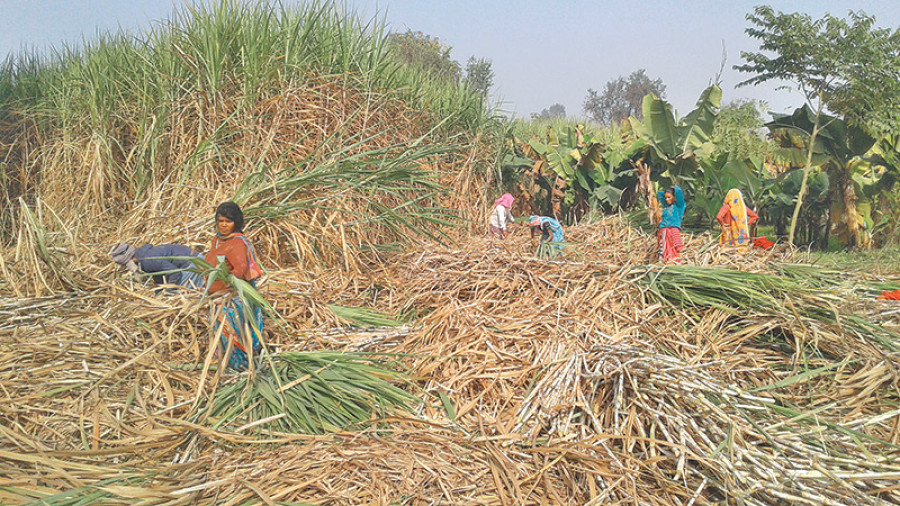Money
Sugarcane farming loses steam due to price uncertainty
Sugarcane farmers of Nawalparasi district have not been able to sell their produce so far, as the government is yet to fix the price of the crop for this fiscal year. This has raised the spectre of the crop drying in the fields.
Navin Poudel
Sugarcane farmers of Nawalparasi district have not been able to sell their produce so far, as the government is yet to fix the price of the crop for this fiscal year. This has raised the spectre of the crop drying in the fields.
In the past, most of the sugarcane farmers used to harvest their crops by this time, sell them to sugar mills and receive payment.
The farmers of the district are worried that further delay in harvesting may cause sugarcane to lose its juice.
“Last year, by this time, farmers had received 50 percent of the total payment from sugar mills,” said Hari Saharan Yadav, a sugarcane farmer from western part of the district. “But I haven’t been able to harvest the crop this year, as I am waiting for the government to declare the cane’s price.”
Earlier, government officials and sugar mill owners had told farmers like Yadav that cane price for this fiscal year would be declared well before the harvesting season. But they have reneged on the promise, which has put many farmers in a dilemma.
“If I harvest my crop, I am not quite sure about the price that I should quote. And if I don’t harvest the cane now, chances of them drying up in the field are high,” Yadav said. Other farmers of the district also share Yadav’s concern.
Sugarcane farming is the major source of income for around 80 percent of farmers in the district. These poor farmers, who are facing difficulties in meeting their daily needs, are now selling their produce to middlemen at cheaper prices.
“They are doing this because sugarcane will produce less juice if they are harvested late in the season,” said Umesh Yadav, president of the Sugarcane Producers’ Committee of Nawalparasi.
Problems like these have prompted farmers of Nawalparasi to switch to other crops. As a result, sugarcane farming has lost steam over the years.
Few years ago, Nawalparasi was home to 14,000 sugarcane farmers. But now the number of sugarcane farmers have dropped to 7,000, according to the committee. With this, output of sugarcane has also dropped significantly.
Earlier, sugar mills used to receive 4 million quintals of sugarcane. Now, the supply of the crop has dropped by 50 percent.
There are three sugar mills—Lumbini, Bagmati and Indira—in the district. They require 2.5 to 3 million quintals of sugarcane. In 2002, the district’s sugarcane production reached its peak of 4.2 million quintals. Last year, the district grew 2.3 million quintals of sugarcane. This fiscal year, sugarcane was planted on 5,000 hectares, as against 7,000 hectares in the last fiscal year, according to the committee.
Nepal produced 3.13 million tonnes of sugarcane on 72,730 hectares in 2015-16.




 10.12°C Kathmandu
10.12°C Kathmandu














